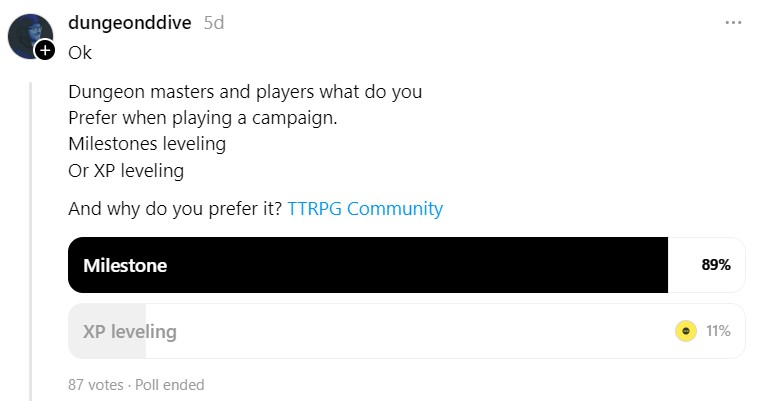
You cannot ask a question about Dungeons & Dragons (D&D) these days without clarifying what edition or hack you play.
And, I believe (and will hopefully show) that a lot of the misunderstandings (and prerequisite name-calling and bickering) between disparate D&D communities is due to not defining what edition they are playing and/or talking about.
It’s important because AD&D and 5e are vastly different games.
So much so, I would class them as different games altogether, and not just versions of the same game.
This was highlighted most starkly by a recent tweet asking:
Do you like a Dungeons & Dragons party with mixed levels ???
do you like a Dungeons & Dragons party with mixed levels ??? pic.twitter.com/0vd86ruuZP
— memeslich ???? dnd memes (@memeslich) October 11, 2024
The Responses
The comments are pretty much (as you would imagine) mixed in their responses. So I dived in and asked a few commentators what edition they played.
Overwhelmingly, those who didn’t like mixed levels were 5e players.
Those who liked it, were mainly old school players.
This may not come as a huge surprise to some of you, but it does highlight two things:
-
-
-
- Old school versions of D&D are completely different to 5e, and
- Context matters.
-
-
Why It Matters
It matters because the answer directly relates to which edition of the game you play.
The reason for this is the editions of Dungeons & Dragons from 3e onwards have zeroed in on game balance to the point of extremism.
Every class levels up at the same rate, and so each level of each class needs to be perfectly balanced, otherwise “it’s no fun.”
In 2nd edition and earlier editions, classes levelled up at different rates via the number of experience points (XP) needed to reach the next level.
As an example, if you are not familiar with older editions, the thief needed only 1,251 XP to advance to level 2, while a magic-user (wizard) needed 2,501 – pretty much double.
This automatically leads to level disparities because, and this assumes the same XP is given to each character, if each of the above characters had 6,000 XP, the thief would be level 4, while the magic-user is only level 3.
And this only grows over time as the characters earn more XP.
Compare this to more modern versions, where everyone is exactly the same level as they all get the same XP and level up together.
And that doesn’t take into account milestone levelling, which seems to be the golden apple for modern D&D players (personally, I dislike it as it promotes railroading, and that is never good).

What to do About It?
Commentators and those posting these questions need to keep this issue in mind, and either stipulate what edition they are talking about or ask clarifying questions.
Otherwise assumptions are made, which leads to the aforementioned misunderstandings, heated discussions, and name-calling.
Over To You
What edition do you mostly play? Let me know in the comments below.
While You’re Here…
Since 2021 I have been publishing d12 Monthly, a monthly zine, which has a ton of articles for any edition of Dungeons and Dragons.
Printed copies are available in my store. The PDF is available on DriveThruRPG and you can get both, plus support my work, via my Patreon.
I will also be releasing some more products in the near future.
Feel free to reach out to me on Twitter or my contact page any time.
